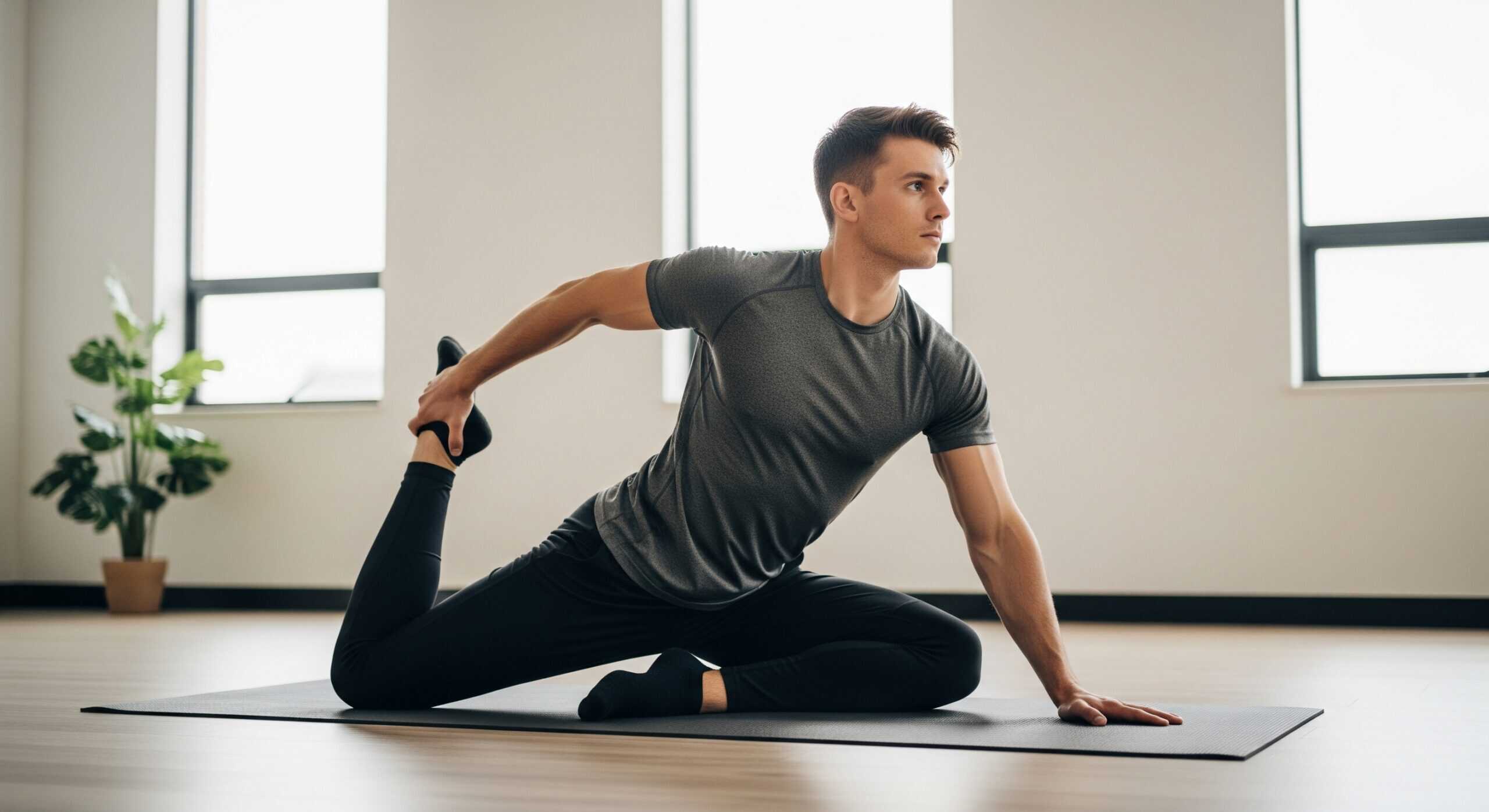Experiencing tightness in the hips or lower back is a common issue, especially for those leading active lifestyles or spending long hours seated. This discomfort often stems from the glute medius, a key muscle in your hip area.
This article focuses on unravelling effective techniques to relieve this tightness.
Whether you’re an active individual, a fitness enthusiast, or someone trying to navigate through day-to-day activities without discomfort, understanding and caring for your glute medius can play a pivotal role in your physical health.
Understanding and Identifying Glute Medius Tightness

The glute medius is a muscle perched on your outer pelvis, playing a vital role in stabilizing your hips and aiding movement. This muscle works tirelessly during activities like walking, running, or even standing. However, it often goes unnoticed until tightness sets in, manifesting as discomfort in the hips or lower back, difficulty in lateral leg movements, or even a sense of imbalance in your stride.
Recognizing the signs of a tight glute medius is the first step towards addressing it. Tightness in this muscle can lead to compensatory movements, inadvertently putting stress on other body parts like your lower back or knees.
Understanding its importance and learning to identify the early signs of tightness can help prevent further complications and maintain overall muscle health.
The Benefits of Stretching Your Glute Medius
Stretching the glute medius isn’t just about alleviating current discomfort; it’s a proactive approach to maintaining muscle flexibility and preventing future pain.
For those who find themselves sitting for prolonged periods or engaging in regular physical activity, incorporating targeted stretches for the glute medius can enhance hip mobility, reduce lower back strain, and decrease the likelihood of injury.
This proactive stretching approach can lead to improved muscle elasticity, better posture, and a more balanced lower body.
Myofascial Release for Glute Medius Tightness
Tightness in the glute medius often manifests as knots or trigger points, contributing to discomfort and limited mobility. Myofascial release is a targeted approach to alleviate these issues.
This technique not only helps in smoothing out these knots but also prepares the muscle for more effective stretching. It’s a crucial step in enhancing muscle relaxation and flexibility, paving the way for a more effective stretching routine.
Glute Medius Release
- Lie down and place a massage ball under your glute medius, located just below the hip bone.
- Cross your leg over the opposite knee if working on your right side, creating a figure-4 shape.
- Gently apply pressure by leaning into the ball, rolling over tight spots.
- Spend 1-2 minutes on each side, focusing on areas of tension.
A foam roller can be a softer alternative for those who find the massage ball too intense. Use it in the same manner as the massage ball, rolling under the glute medius while maintaining the figure-4 leg position. Another gentler option is to stand and lean against a wall with the ball placed between the wall and your glute medius.
Effective Stretches for a Tight Glute Medius
Now that we’ve released the muscle tension through myofascial release, let’s move on to specific stretches that can further alleviate tightness in the glute medius.
Lying Cross-Leg Stretch
- Begin by lying on your back.
- Cross one ankle over the opposite knee.
- Gently pull the uncrossed leg towards your chest until you feel a stretch in your glute area.
- Hold this position for a comfortable duration.
- Switch sides and repeat.
Seated Butterfly Stretch
- Sit on the floor and bring the soles of your feet together, knees bent out to the sides.
- Hold your feet with your hands and lean forward gently, keeping your back straight.
- Hold the stretch for a comfortable duration, feeling the stretch in your glutes and inner thighs.
Pigeon Stretch
- Start in a seated position and extend one leg behind you.
- Bend the other leg in front of you at a 90-degree angle.
- Lean forward over your bent leg, extending your arms in front.
- Hold the pose, feeling a deep stretch in the glutes.
Seated Figure 4 Stretch
- Sit on a chair and cross one leg over the other, placing the ankle on the opposite knee.
- Gently lean forward while maintaining a straight back.
- Hold this stretch, feeling it in the glute medius of the crossed leg.
90/90 Stretch
- Sit with one leg bent in front of you at 90 degrees and the other leg bent behind you, also at 90 degrees.
- Lean forward over the front leg, maintaining a straight back.
- Hold the stretch, focusing on the glute medius.
Practical Tips for Effective Glute Medius Stretching
Successfully integrating glute medius stretches into your routine can significantly improve flexibility and comfort. Here’s a quick guide to help you maximize the benefits of these stretches:
- Morning Routine: Start your day by stretching the glute medius to wake up your muscles.
- Breaks During the Day: If you’re sitting for long periods, use your breaks to perform these stretches.
- Post-Workout: Include glute medius stretches in your cooldown to prevent muscle tightness.
- Adjust as Needed: If a stretch feels too intense, modify it to suit your comfort level. The aim is a gentle stretch without pain.
- Maintain Proper Form: This ensures the effectiveness of each stretch and prevents injury.
- Seek Professional Guidance: If you have health concerns or pain persists, consult a healthcare professional for personalized advice.
Conclusion
Addressing tightness in the glute medius goes beyond temporary relief; it’s about nurturing your body’s long-term health. A consistent stretching routine can significantly improve your hip mobility and overall body posture. Embrace these stretches as a regular part of your wellness regimen for the most impactful results.
For a holistic approach to glute medius health, don’t forget to explore our article on exercises specifically designed for the glute medius. Together, stretching and strengthening will guide you towards a more balanced and comfortable physical state.






